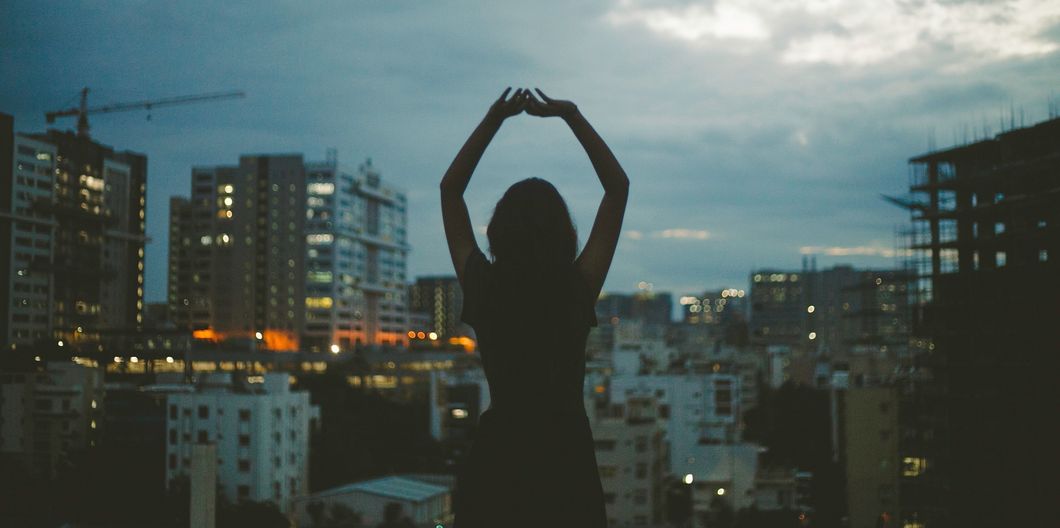When there is a challenging news cycle, it often feels like there are painful and re-triggering stories everywhere. It can feel never-ending and inescapable when we see and hear these stories every time we turn on our TV, read our email, or scroll through social media. The recent Kavanaugh allegations and hearings have been significantly difficult for survivors of sexual assault and trauma. Even aspects of social media that are intended to reduce stigma and support survivors can be difficult to see or constantly be reminded of, like #WhyIDidntReport. If this resonates with you, please know that it is okay to give yourself a break.
You don't owe anyone your participation in conversations about the hearings and you don't need to share your personal experiences in a public way. On the other hand, sharing your story might feel empowering and freeing. Maybe you're finding yourself somewhere in between – wanting to share your story, but feeling weighed down by anxiety and overwhelm. The process of healing isn't linear or one-size-fits-all. Whatever you're feeling is okay.
Practicing yoga in times of high stress and anxiety can help you connect to how you're really feeling – when you aren't pretending like everything is fine. Physically, practicing yoga can help alleviate and bring awareness to areas in the body holding tension. Yoga postures can turn on the parasympathetic nervous system, which is also referred to as "rest and digest", versus the sympathetic nervous system's colloquial term "fight or flight". When our bodies shift into "rest and digest", we can pause, relax, and begin to truly rest deeply.
Ultimately, yoga is a journey of self-inquiry, self-care, and self-compassion. The process of self-inquiry starts with allowing yourself to feel whatever it is you're experiencing and meeting whatever you find with compassion and acceptance. You might consider practicing this sequence before bed as part of your night routine, to help signal to your body that it's time to slow down and get ready for sleep.
1. Constructive rest and gentle warm-up
Start by lying on your back with your knees bent and feet planted on the floor. With your arms resting alongside you, open your palms so they are facing the ceiling. Gently stretch your palm and fingers and then close your hand so that the tips of your fingers lightly touch. Do this a few times on your own breath's rhythm, matching your inhale with the opening of your hand and exhale with the meeting of your fingers.
2. Knees to chest pose (Sanskrit: Apanasana)
Hug both knees into your chest and begin to gently massage your lower back by rolling side to side.
3. One knee to chest pose (Sanskrit: Eka pada apanasana) to a variation of Reclining hand-to-big-toe pose (Sanskrit: Supta Padangusthasana)
Keep the right knee hugging in towards your chest, and stretch your left leg out long. Gently draw circles with your right knee to warm up the hip area and begin to release tension held here.
Interlace your fingers behind your thigh and begin to straighten your leg towards a 90-degree angle (imagining the sole of your foot is parallel to the ceiling). Bend your knee any amount to stretch your hamstring muscles. Hold this for four or five breaths. Switch sides.
4. Simple supine twist (Sanskrit: Jathara Parivartanasana)
Hug your knees back into your chest and on your next exhale, allow your legs to fall over to your left. Stretch your arms out to the side like a "T" or like a cactus by bending your elbows at a 90-degree angle. Come back to center on an inhale, and on an exhale, allow your legs to fall over to the right.
5. Thread the needle (Sanskrit: Sucirandhrasana)
Cross your right ankle over your left thigh, flexing your foot. Lift your left foot off of the floor and interlace your fingers behind the left thigh. This can be a deep stretch in the hips and gluteal muscles, so if it feels too deep, you can leave your left foot planted on the floor. Stay here for a few breaths and then switch sides.
6. Savasana
Stretch your legs out long with a yoga bolster or pillow under the knees to relieve your lower back and a folded blanket or pillow under your head. To make Savasana extra grounding, I suggest folding a couple of blankets and placing them on your upper thighs and belly. Allow yourself to be held up by the ground. Your neck and legs are held up by props and your back can spread across the floor. Slowly scan your body and notice if there is anywhere you can do less, like unclenching your jaw. Notice any feelings that arise without judging yourself - see if you can meet your thoughts and feelings with compassion.
7. Closing
After a five or 10 minute period of relaxation, draw your knees into your chest and roll onto your right side in a fetal position. Slowly and gently come up to a seated position. Take a moment to thank yourself for making space in your day to go inward and take care of yourself. Remind yourself that you can always return to this sequence or even just a short seated meditation to press "pause" and take a break. Namaste.







































